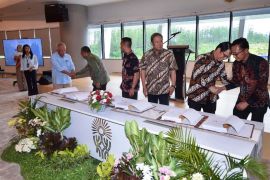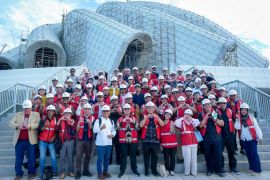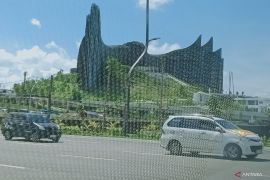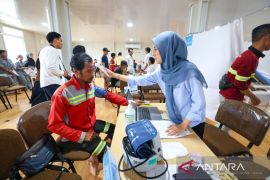"The PUPR Ministry has started the construction of various infrastructures in IKN to show the government's seriousness in building the IKN," head of the ministry's task force for IKN infrastructure development, Danis Hidayat Sumadilaga, said in a statement released on Friday.
He said that his side has invited Japanese investors and business stakeholders to take part in the development of IKN because it has been guaranteed by a strong legal basis, namely Law Number 3 of 2022 regarding State Securities.
Hence, the Indonesian government has established the IKN Authority (OIKN) to carry out the preparation, construction, transfer, and management of the IKN.
OIKN will support investors who participate in the development of IKN through the public-private partnership (PPP) scheme.
Sumadilaga said that the development of the IKN as an integrated urban ecosystem is being implemented to realize the capital as a smart forest city.
He then outlined the details of the IKN development project, including the design of the city; development of land use and zoning; as well as the provision of basic infrastructure, such as roads, sanitation, waste management, and central government facilities.
The first phase of IKN development is being implemented from 2022 and is targeted to be completed by 2024. It consists of 63 construction projects, which cost around US$4.5 billion -- all of them are funded by the government.
As of the second week of February 2023, the government has made contracts with developers for a number of projects with a total cost of US$1.58 billion.
The first phase will focus on the construction of the First Planning Area (WP I) of the Central Government Core Area (KIPP), covering an area of 6,671 hectares — at least 49 percent of which will be maintained as a forest area.
WP I of the KIPP has been divided into three construction zones, namely Zone 1A for the main government facilities, such as the presidential palace; Zone 1B for education, government, and housing facilities; as well as Zone 1C for health, government, and housing facilities.
All of the construction projects are applying building information modeling (BIM) and geographic information system (GIS).
Related news: IKN development demonstrates TOD concept: PUPR Ministry
Related news: IKN project boosting investment to North Penajam Paser: official
Translator: Aji Cakti, Uyu Liman
Editor: Anton Santoso
Copyright © ANTARA 2023












